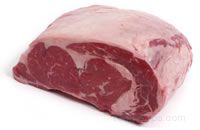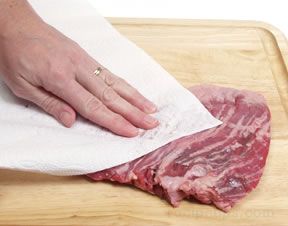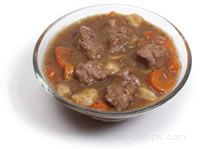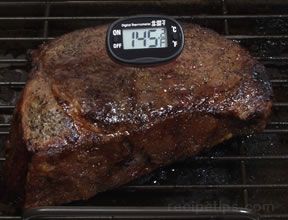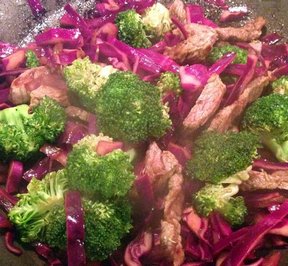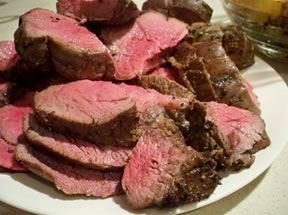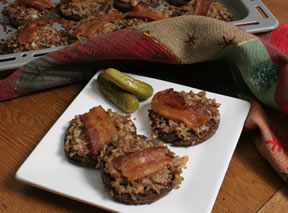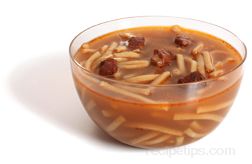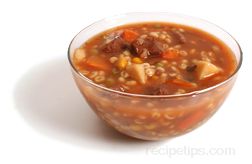General Tips for Carving Beef | Steps for Carving a Prime Rib Roast
|
Beef that is roasted should rest for 10 to 15 minutes after it is removed from the oven so that the natural juices are allowed to settle. This produces beef that is more tender and allows for easier carving. Beef that is a bit tough should be carved into thin slices across the grain. Tender cuts of beef may be difficult to cut into thin slices because the slices may fall apart, so thicker slices are more appropriate. It is best to carve tough beef cuts into slices that are no more than ¼" thick and tender beef can be carved into slices that are ½" or more. |
|
 |
|
 |
|
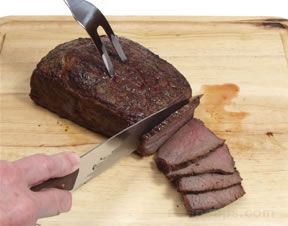 |
|
 |
Steps for Carving a Prime Rib Roast
|
Prime rib (either a boneless rib roast or a standing rib roast, which includes the bones) is another oven roast that is easy to carve. If the prime rib is boneless, that is, if you have removed the chine bones and rib bones prior to roasting, carving the roast is very easy. If the bones have not been removed prior to roasting, they will need to be removed after the meat is cooked so that carving will be easier. To remove the bones after the meat has been cooked, make one cut across the bottom of the roast to detach the chine bone; then remove the rib section by slicing parallel along the rib bones, removing the entire rib section in one piece. If the chine and rib bones were removed prior to roasting (but were tied to the meat while roasting to add flavor), use the following simple instructions for carving the meat. | |
| Place the prime rib roast onto a cutting board. Cut the strings that are securing the bones to the meat. |  |
| Discard the string and remove the bone section (previously cut from the roast) and set it aside. Keep this portion of the roast for those who may enjoy eating the meat from the bones. (The ribs can be cut individually by slicing parallel between the rib bones.) | 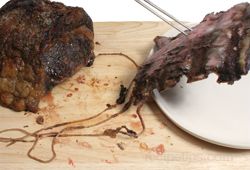 |
| Position the boneless portion of the prime rib roast on the cutting board with the rib bone side down. Cut slices across the grain of the roast to desired thickness. Slices are generally cut 1/4" to 1/2" thick. | 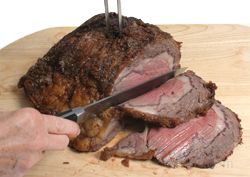 |
| Cut only the number of slices that will be served during the meal to ensure that the leftover portion of the prime rib roast will retain as much moisture as possible when the leftovers are served. (Slicing the remaining portion of the roast prior to storing it in the refrigerator will reduce the tenderness of the leftover meat.) | 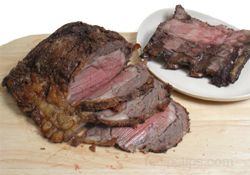 |








